Exploring Honeywine | Schramm’s Mead
Craft beer is not the only industry to see a huge boom recently in both production and popularity. As drinkers today are always on the hunt for something new and exciting, the versatility of honeywine has found large appeal with a range of different demographics, and has led to the opening of countless full-production meaderies across the United States. Schramm’s Mead has been a top producer of honeywine for a decade now. They’ve helped to pioneer the continued growth of the style as well as set the benchmark for quality and success. We had the privilege to sit down and talk with Ken Schramm, co-founder and head meadmaker of Schramm’s, to learn more about their roots, program development, and some of the other pivotal factors he has pioneered that have further impacted the sweeping mead revolution that our country is seeing.
The Road to Schramm’s
Home-brewed Beginnings
Ken Schramm, like a large number of other Meadmakers, started off as a homebrewer, and a self-proclaimed beer geek. In the 1970’s there wasn’t much in terms of complexity of style in the U.S. Much of the fascination for those uninterested in the American Light Lagers of the era was directed toward European beer. Whether it was full-bodied German lagers, Belgian Lambics, or countless other Old World styles, Ken always gravitated toward the exploration of beer’s potential.
Fast-forward to Christmas of 1987. Ken and some other family members got homebrewing kits, learning the basic processes under the guidance of their cousin Dave. It didn’t take long before all of them were hooked. Ken joined the American Home Brewers Association in 1988, and not long after received his first copy of Zymurgy magazine. He learned about Bill Pfeiffer, 1985 Meadmaker of the year, one of the five nationally recognized and ranked beer judges, and who happened to live only a few miles from Ken.
Expansion & Connection
Time moved quickly from there. Under Bill’s generous mentorship the two started out by expanding their knowledge and early work. This began through the joining of the Ann Arbor Brewer’s Guild. It was through this Guild that Ken met Dr. Dan McConnell, a well-known microbiologist who would later help Ken found the Mazer Cup along with a man by the name of Mike O’Brien. The trio also started the Michigan State Fair Home Brew Competition, and Ken and Dr. McConnell both conducted early presentations together on mead, mead judging, and fruit beers.
Drawn to Mead
By the early 1990s, Ken had really begun to shift his focus toward mead. Particularly, he was drawn to honeywine because of the initial scarcity of commercial examples. While beer had its set of categories and definitions for all the varying styles, mead had no set definition for what it was “supposed” to be. With a truly creative approach and grounded determination, he knew he could get to the point where he could use his “mind’s tongue” to visualize and conceptualize a beverage that he wanted to create. The guidance of Bill Pfeiffer was paramount during this period of time. It taught Ken how to really understand the process of piloting. Specifically, doing the work that needed to be done progressively, one variable at a time, in order to reach a set goal.
Through this process, Ken quickly honed in on where he wanted to be. Factors such as growing his own fruit, adjusting the amount of fruit used in a recipe, seeing the difference that varying yeast strains could make, and monitoring how specifically he targeted his free amino nitrogen load all were examples of things that affected his outcomes.
Scaling Up
After at least 30 different batches of The Statement, which has since become a mead synonymous with some of the best in the industry, it became time to tweak just a bit further to account for the next step, which was to make the recipe commercially scalable.
The Statement was the first mead Ken entered into a Mead Competition (The Mazer Cup), and it won First Place. He made a point to say that The Statement wasn’t even his best mead at the time. As just one in a growing portfolio of successful recipes, you could say the rest would be history.
The Mazer Cup
Anybody remotely involved in mead is familiar with the Mazer Cup. With over three decades of competition under its belt, the Cup, founded by Ken Schramm, Dan McConnell, and Mike O’Brien, has always prided itself in being an event produced and operated by mead-lovers across the U.S. With the goal to restore Mead to its rightful place as a mainstream beverage, the Cup has earned its title as being the largest and most prestigious commercial and amateur mead competition in the world.
When talking with Ken, he recalled the inaugural Cup in 1992 only having 47 total entries. This number has skyrocketed over the years. The 2022 Cup received over 300 entries in the Commercial Cup alone, and another 457 entries in the Home Competition. This massive increase speaks volumes to the exponential growth of popularity in honeywine over the last 30 years.
Ken no longer runs the Mazer Cup, making the decision long ago to put family first as well as to continue to pursue mead education. For over 10 years now it has since been placed in the more-than-capable hands of Pete Bakulić and Carvin Wilson, after merging with the competition from the former International Mead Festival.
In regards to the Mazer Cup International Competition for 2023, here is the most up-to-date information of scheduled events:
- Registration will be from 09/01/2023 – 09/15/2023
- The shipping window for submissions will be 09/16/2023 – 10/15/2023
- Judging will take place in Kansas City, MO, with the main judging taking place from 11/02/2023 to 11/04/2023. Winners broadcasted on Sunday Evening, 11/05/2023.
Cheers to 10 Years
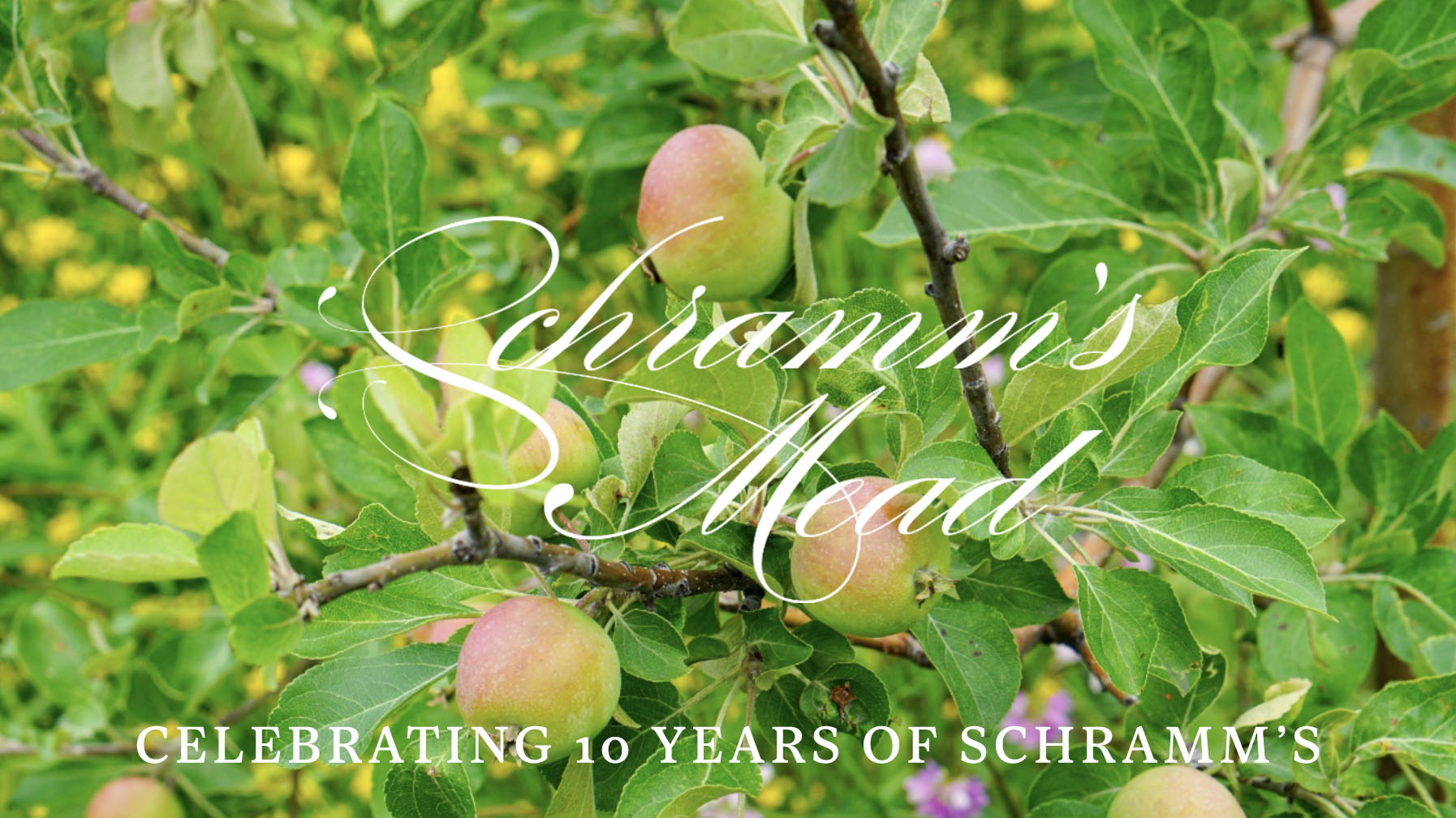
In addition to the Mazer Cup having just celebrated its 30th year of competition last year, Schramm’s Mead is celebrating its 10 year anniversary as well. There are exciting celebrations happening now to honor the last decade, and the meadery has exciting plans for the future.
Schramm’s recently purchased an orchard. As is the case with anyone involved in the business of high-end fruit beverages, the quality of ingredients cannot ever be truly controlled unless it is produced independently. As stated by Ken, “you can’t make a silk purse out of a sow’s ear.” There’s so much to be learned, and Ken is excited for the future of experimentation. That, and creating the best product they possibly can.
Growth Over Time
As growth and education in the Mead industry has continued to grow over the years, so too has Schramm’s in their development of world-class honeywine.
Back when The Mazer Cup had just gotten off the ground, and still about a decade before Ken published his hugely popular and successful book The Compleat Meadmaker, there was a period of time where there wasn’t very much information readily available to contribute to the successful production of high-quality mead. In the early 90’s it was only just becoming popular, and there was hardly any information on the behavior of different yeast strains in mead or about varietal honeys. This created a severely constricted commercial market.
Leave it to Ken Schramm and Dan McConnell to do something crazy. In 1993, the two set out and created separate batches of mead highlighting a single varietal honey and its interactions with six different yeast strains. They simultaneously conducted the opposite experiment, utilizing the same yeast with six different varietal honeys. Finally, they combined the six variety honeys and fermented that blend with that same yeast strain, and proceeded to serve the 13 meads in a single session at the 1994 American Homebrewer’s Association National Conference. What the two were able to educate members of the Association on was mind-blowing, and set the stage for Ken to continue his expansion of mead knowledge as far as he could. Not to mention, many of those tasting the meads and listening to Ken and Dan talk that day went on to become incredibly successful, award-winning meadmakers in the years to come.
The Schramm’s Program
Ken noted that one of the most rewarding aspects about building popularity, growth, and education about a virtually unknown style of alcoholic beverage has been the ability to be essentially uninterrupted in his thirst for knowledge. He used the recognition of growing their own fruit at Schramm’s as an example of something particularly important to him. It was something that he learned over the years was critical to creating the best product they could.
Arguably the most important thing that Ken has come to realize over the course of his years in the industry is that mead has a big awareness burden that it has to overcome. That is to say that while growing from almost zero knowledge in the U.S. to still a minority sample having an idea of what mead is, it’s an issue that in comparison to beer and wine has never been seen before. The road ahead is undoubtedly still a long one when discussing the education of consumers about mead. That said, for those more aware of the movement, there is no argument that for the last decade, Schramm’s Mead has been synonymous with success and quality in the mead industry.
“What I’ve been striving for in the meads that we make is in creating something intrinsically delicious. We wanted people to be able to be able to open a bottle of our mead, pour it and never question its deliciousness.”
Ken was generous enough to send a sample our way to review, allowing us to showcase their 5th Batch of A Smile of Fortune. This mead is a more-than-fitting example of what we had the privilege of discussing with Ken.
A Smile of Fortune
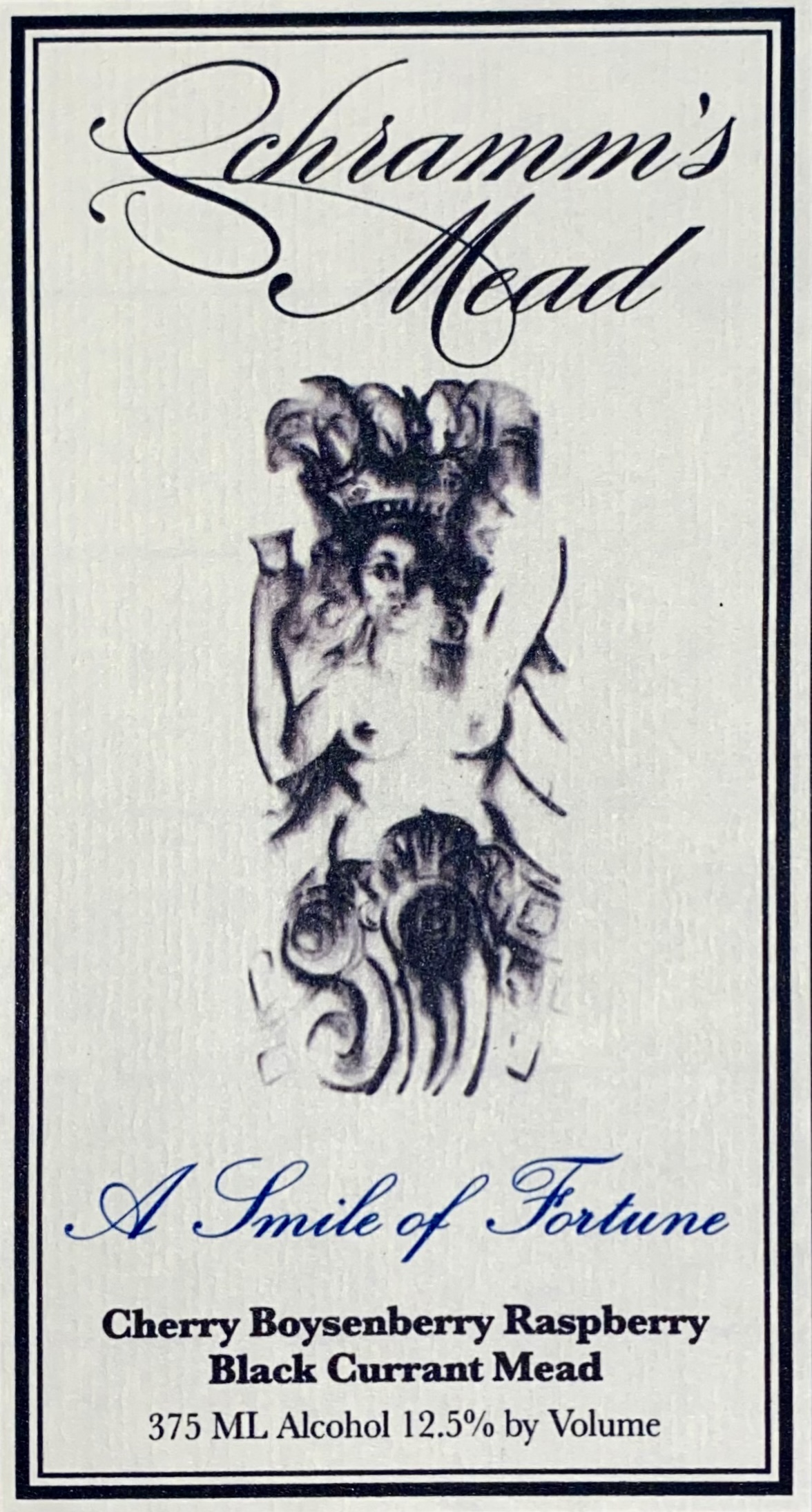
This is a dark fruit mead made with Black Currants, Polish Lutowka Cherries, Heritage Red Raspberries, and Oregon Boysenberries. As a true-to-form Schramm’s Mead, this intensely bold honeywine recommends pairings with fresh young cheeses, pork, and Mindo chocolate.
The Review
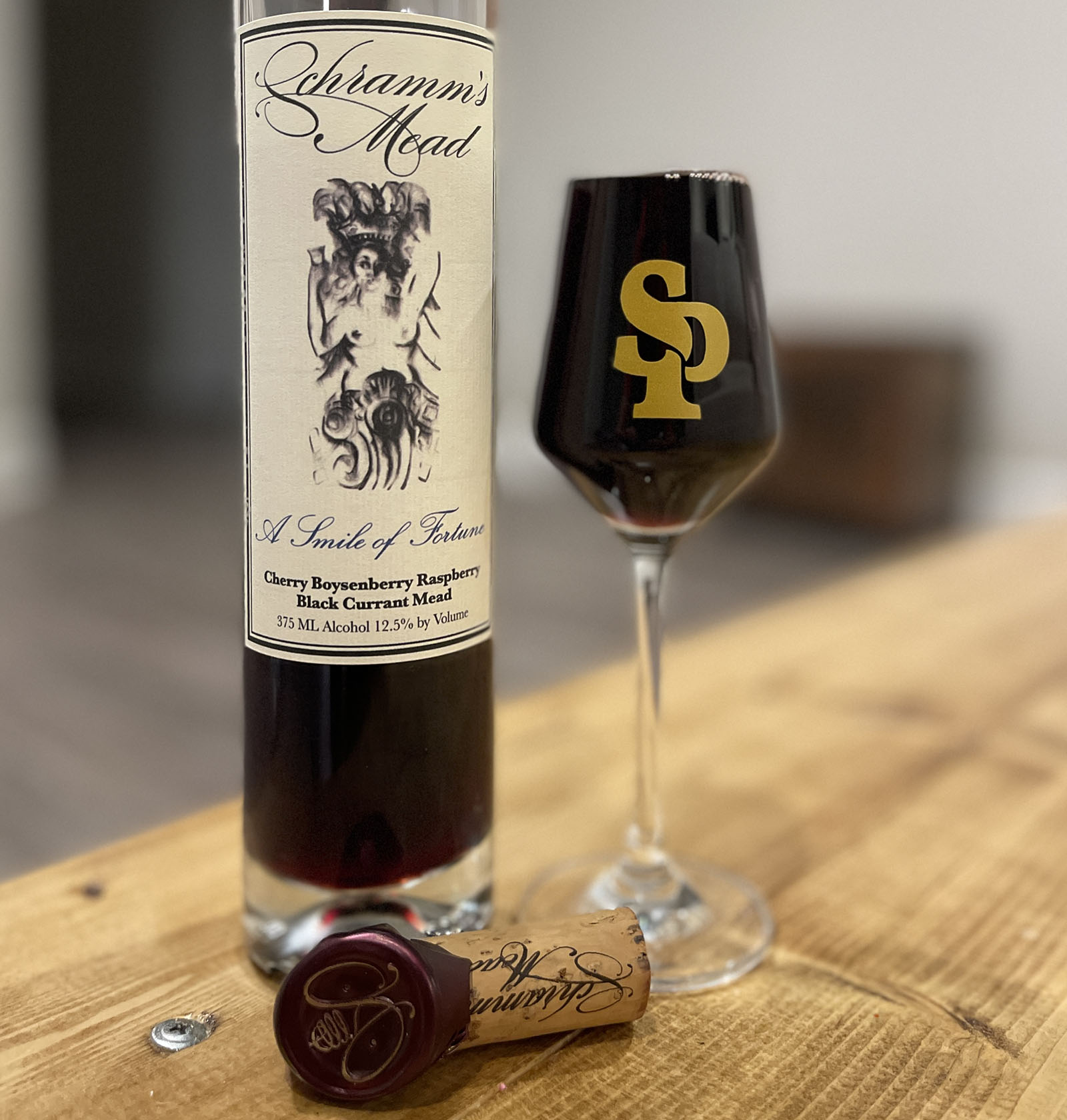
As mentioned, we had the opportunity to review A Smile of Fortune, which finished at 12.5% ABV.
The pour is a bold, deep, brooding crimson. When swirled, there is great leg retention as the mead funnels back down the glass.
Bright, acidic cherry and boysenberry spring to the forefront of the nose. With time in the glass, the sweetness of the berries intensifies, bringing forth a fantastic bouquet of blackberry jam.
The palate is an exceptional balance of mildly drying tannin, medium acid, restrained tartness, and rich honey sweetness. Coursing through the mid-palate is cherry preserves, Ruby Port, and fresh blackberries. On the tail is pleasantly warming ethanol and the slightest puckering tartness as it trails off.
While at first sip this mead introduces itself with a seemingly elegant simplicity, after given time to open up in the glass and accustom itself to the palate, it proves to be so much more. The tannin, the acid level, the tartness to balance the jam, and the warmth on the finish to round it out. All these factored in expertly into a balance that very few meaderies are capable of achieving. There is a reason why Schramm’s is the name synonymous with mead in today’s market. Truly exceptional.
The Long Game
Mead has seemingly always been playing catch-up. Education on honeywine over the last 30 years has done wonders for the industry, and the growth has been amazing to see. Ken Schramm has been one of the industry’s largest advocators and educators, and his Meadery has produced some of the finest honeywine found anywhere in the world.
Ken left us with the reminder that the only way to get the knowledge is to do the hard work. More specifically, play the “long game.” Study these beverages elementally. Beer is a balance built upon malt, body, bitterness, hops, carbonation, and mouthfeel. With mead it comes from sweetness and acidity, fruitiness and body, and in both instances, alcohol content and its contribution. Achieving balance of these elements is key, and what Ken dubbed the “mind’s tongue.”
The road ahead in this still-niche industry is a long one when it comes to education and the continued growth of its popularity. But thanks to Ken Schramm and the people that he met along the way, it is on the right track. Schramm’s Mead has set the benchmark. That said, there are so many promising meaderies coming up with bold, unique, and delicious honeywines of the highest quality. If you haven’t already, it’s about time you see what all the buzz is about.





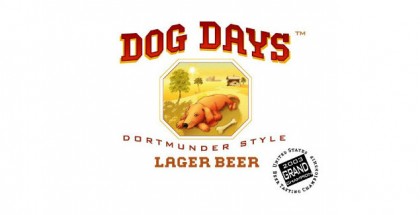

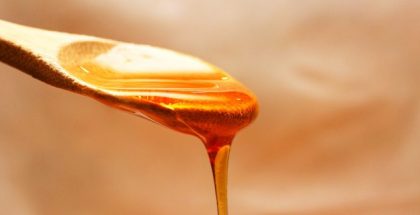
Submit a Comment